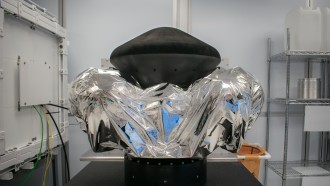After developing a DNA chip known as a microarray late last year, researchers at the University of Michigan Kellogg Eye Center are now utilizing the chip in high-tech procedures to help patients suffering from the eye disorder retinitis pigmentosa regain partial vision.
The FDA-approved procedure has been performed on four people in the United States, with a fifth scheduled for the procedure later next month. One patient, 55-year old former factory worker Roger Pontz from Reed City, Mich., has reported regaining enough of his eyesight to see small glimpses of his wife, grandson and cat.
The procedure, as it was performed on Pontz, involves an artificial implant in one eye and is part of a system developed by Second Sight, a visual prosthetics manufacturer, that also includes a small video camera and transmitter housed in a pair of glasses the patient wears.
The images that are captured by the camera are instantly converted into a series of electrical pulses that are then transmitted wirelessly to an array of electrodes on the surface of the eye's retina. These electrical pulses then stimulate the retina's remaining healthy cells, causing them to relay the signal to the optic nerve. Once relayed to the brain, this "visual information" is translated into recognizable light patterns that are interpreted by the patient, allowing them to regain some visual function.
The visual information then moves to the brain, where it is translated into patterns of light that can be recognized and interpreted, allowing the patient to regain some visual function.
University of Michigan Kellogg Eye Center doctors claim that the patients who've had the procedure wind up referring to the glasses as "their eyes."
Retinitis pigmentosa is an inherited eye disease which damages the retina and results in a slow but progressive vision loss. Symptoms can include losing the ability to see at night or in low light, blurred vision, tunnel vision, and central vision. In advanced stages, it can lead to a person being able to see only bright flashes of light or total blindness.
The technology behind the system developed by Second Sight is called the Argus II, a Retinal Prosthesis System that is designed to bypass the damaged photoreceptors. The miniature video camera that is housed in the patient's glasses captures a particular scene that is then sent to a small, patient-worn computer (i.e., the video processing unit - VPU), where it is processed and transformed into instructions that are sent back to the glasses via a cable. Second Sight explains that this entire process is intended to create the perception of patterns of light, which patients can eventually learn to interpret as visual patterns.
Patients that have undergone the surgery are required to go through up to three months of training that is designed to allow their brain to adapt to the bionic eye and the vision it gives.









